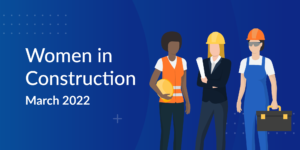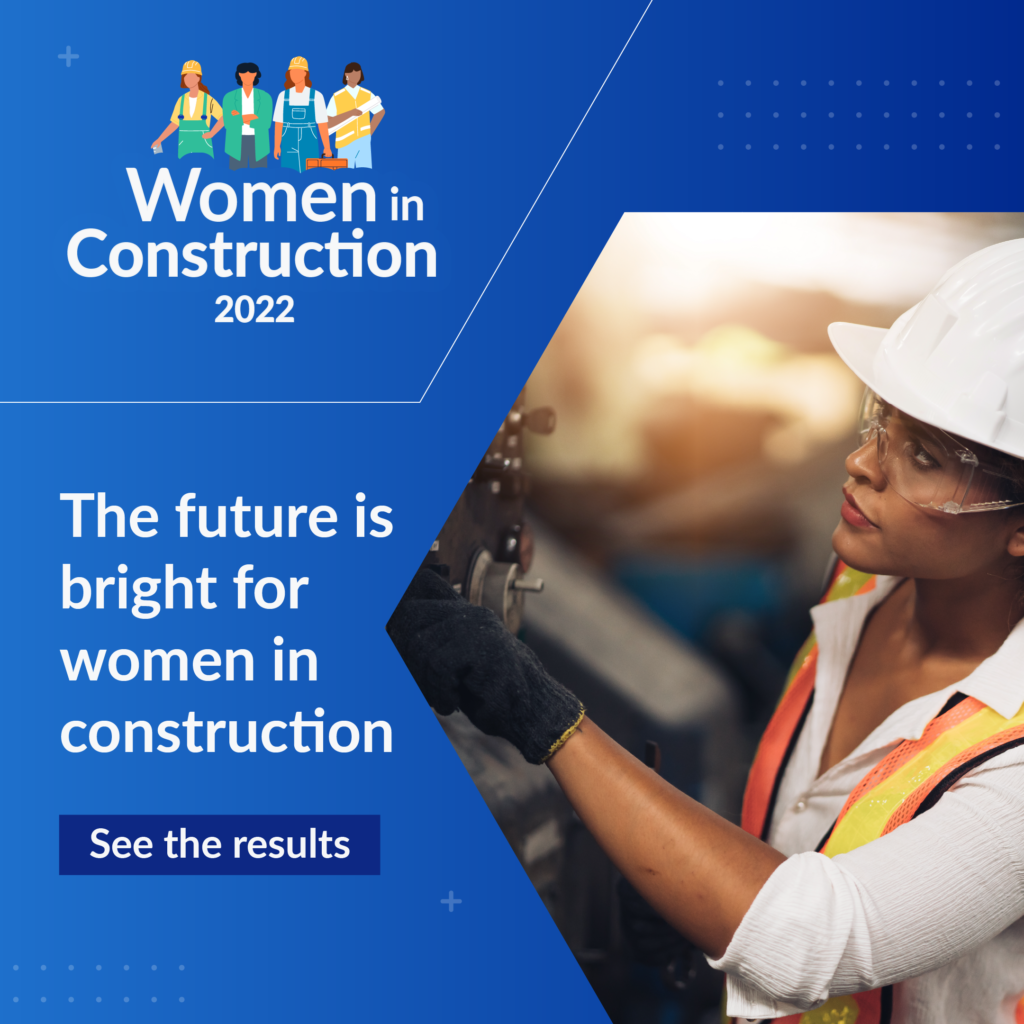
With the construction industry fundamentally changed after two years of the COVID-19 pandemic, workers are truly looking at a “new normal” when it comes to working habits.
Levelset’s 2022 Women in Construction interview series has shed light on the struggles that people — particularly women working on the office side of construction companies — are facing as the pandemic continues to impact the industry.

See what women in construction said about their jobs, their coworkers, and the state of the industry.
Levelset’s Lori J. Drake sat down with six different female construction professionals to discuss their careers in construction — and a topic that came up in every conversation was how many changes each of the women experienced due to COVID.
“People are afraid to come back to the office…I think being able to handle personnel issues is a big challenge right now,” said Jennifer Siegfried, manager of accounts payable and billing with Lumbermens Merchandising Corp. “And [for] just about any position, let alone just mine.”
The challenge of managing the move to remote work is still being felt for some, even after taking time to acquaint themselves with it.
“I think with the pandemic in the construction industry, we were forced to figure out a way to actually be remote — whether it was stopping construction and figuring out how we could have everybody on sites, how we were going to get deliveries, to having an office who in 85 years had never worked remote,” Siegfried said.
As adaptable as the construction industry requires people to be, industry leaders are having to learn how to change even more.
“I had to learn how to equip myself to be able to manage from afar, because that was foreign to me, [as well as to] be able to engage with my employees to make them feel like they’re not out there on an island by themselves,” said credit and collections manager Alaina Worden. “How do we hold each other accountable and continue to grow, develop, and build that team network when we’re not sitting next to each other? We can’t just rouse each other or overhear a conversation and say, ‘Hey, here’s my 2 cents on that.’”
“I think we need [the office] for collaboration and be able to work as teams. But I think the construction industry’s going to have to figure out a way to remain flexible once we get back to whatever normal is, so that we can continue to build it within the industry…there’s plenty of new generations that are coming up that are going to be looking for that flexibility…in order to keep the industry moving and we’re going to have to find that flexibility.”
COVID has also played a role in the rapidly changing labor force, as well as the current labor shortage the construction industry is experiencing along with many other fields.
“If our children don’t go to college and get a degree, a trade school is just as valuable and should be paid the same as somebody who goes to college and gets a [degree],” said D’Ann Johnson, corporate contracts and credit manager at A-Core Concrete. “I think we need to start looking at how we, as a country and as a community, look at the skilled labor force as opposed to white collar labor force, and put as much emphasis on [the skilled labor force].
[Other companies] need to understand that we still have to do our job. We still have our rules and policies in place to protect our company. I think our industry is growing. There’s a lot of growth during COVID,” commented Cowtown Materials Director of Credit MaryAnn Gentry. “We never stopped working. We were essential…we still have a job to do. There’s things that happen in life and changes and whatever may come, but we still have to follow our policy…we just continue doing what we’ve got to do.”
“….what we saw with COVID is, ‘Hey, [remote work] actually works pretty well.’ …Having the ability to have people work from home has been huge.”
It hasn’t all been negative in terms of adaptation. Braun and Butler credit controller Kaci Roberts noted that there’s a new type of resilience that is being built within the industry, one that’s focused on problem-solving in a much different way than before.
“….what we saw with COVID is, ‘Hey, [remote work] actually works pretty well.’ …Having the ability to have people work from home has been huge,” Roberts said.
“We’re definitely seeing, on the construction side of it and with supply chain issues, it’s forcing our pre-construction and our estimators and our project managers to kind of really start thinking outside of the box of, ‘Hey, here’s how we typically solve these problems, but due to this, this, and this — maybe let’s try to come up with some unique solutions to this problem’,” she continued.
As these leaders continue to figure out how changes are going to affect their teams long-term, there are likely to still be more challenges.
“The construction boom isn’t stopping…it’s still growing, growing, growing,” noted Rachel Sales, senior director of credit for SRS Distribution.
“…the material shortages will catch up at some point and it’ll get back on track. I think then the challenge will be finding the staff to support the growth that we have [had],” Sales continued. “That’s been more challenging — people aren’t looking for jobs in [construction credit] because they don’t know it exists. …We’re kind of blazing the trail on that…and hopefully that’s going to be a great way for us to find some new talent.”